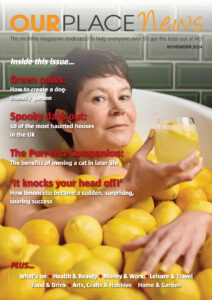
Every spring, more than 200,000 visitors descend upon the Spanish city of Lleida for L’Aplec del Caragol – a cheerful celebration of the region’s most beloved food: snails.
You smell it long before you see it. Columns of smoke rise from the barbecues at L’Aplec del Caragol, Catalonia’s most important gastronomic festival and a yearly highlight for the inhabitants of Lleida, a city 130km west of Barcelona in north west Spain.
As you get closer, you hear the music coming from the 119 penyas, the party tents each housing a bar, wood-fired barbecue and dinner tables, where groups of friends and family organised into so-called colles, or crews, feast on snails and dance until the early hours of the morning.
It’s no wonder why the event draws more than 200,000 visitors and 15,000 participants for three days each spring (24-26 May 2024; 23-25 May 2025). People are curious to try the region’s specialty – and discover what the world’s biggest snail-eating festival is all about.
All the penyas follow the same schedule with a collective lunch at 14:30 and dinner at 22:00. Some of the bigger penyas hire professional chefs, while others divide tasks among its members, explains Arantxa Contreras Blazquez, who has been the head of the penya Lavativa for 14 years. While the food is important, the best part is to be reunited with your friends. “Half of the people here I only see once a year for Aplec,” she says.
The makeshift streets are a crowded affair and the joyfulness of the Lleidatans is contagious as they stand around large paellas (pans) filled to the brim with snails while cooking and drinking cold beer in the warm May weather. While walking across the festival grounds in the park Camps Elisis, I come across a man in an inflatable snail costume, an aioli-making contest and a children’s snail race. The latter is quite anticlimactic given that the animals hardly move – most Catalans would probably agree that the snails are better as food than entertainment.
“The snail is something characteristic of Lleida, it’s a food that’s meant to be shared with friends and family. We’ve cooked and eaten snails all our lives,” says Angels Ons Solé, a well-dressed woman in her 70s. She prepares a caracolada – a barbecue, but with snails – whenever her family comes to visit. Aplec itself could be described as a supersized caracolada on steroids.
Entrance to the festival is free and visitors who don’t belong to any crew can enjoy traditional snail dishes in the spacious restaurant, including a la gormanda, snails cooked in a sauce of spicy paprika and herbs, and a la llauna, where the mollusc is cooked using a square paella placed directly onto an open fire.
Snail aficionado Rosa Maria Gutierrez Naharro has come from a nearby town to celebrate her birthday at Aplec. “We’ve tried the snails a la gormanda and the snails with ribs, which were my favourite. If you order them, make sure to ask for extra bread to dip in the delicious sauce,” she says.
There’s an effort to conserve these traditional recipes, but they’re also very open to interpretation, explains Ferran Perdrix, the president of FECOLL, the association organising Aplec. “The snail is like a blank canvas; it absorbs any flavours you add, and everyone has their version.”
Francisco Vivas Fernandez has been working in the festival’s restaurant for the past three years, and while most visitors are domestic tourists, he has also served people from France, Germany and Malta.
At one table, a group of Chinese students visiting Lleida are sharing a plate of snails a la llauna. While they’re not entirely sure how to eat them at first – locals use long toothpicks to remove the snail from its shell – they’re pleasantly surprised by the taste. For the less adventurous, there are non-snail options such as cod in tomato sauce and butifarra, traditional Catalan sausage.
Apart from plenty of food, the festival also offers a crash course in Catalan culture, and visitors can enjoy everything from castellers – human towers several stories high – to the traditional dance Sardana. In recent years, there’s also been an effort to improve the entertainment options available to those who don’t belong to a penya, including concerts and open-air dance floors where DJs blast reggaeton until 06:00.
Most visitors come from nearby cities, but others travel from Madrid or other places connected by high-speed train, explains Perdrix. While Aplec has been named a festivity of national tourist interest, he hopes it will soon also become known internationally.
For now, he will have to settle with breaking another record – this year, more snails than ever were consumed at the festival, 15 tons to be precise. During the weekend, Lleida lives and breathes snails, and the city’s restaurants have to do two sittings to make sure everyone gets served, he says.
The festival keeps growing and four new penyas were added this year, making it the biggest edition in the festival’s 43-year history.
In front of a big pot of snails a la gormanda I find Aplec veteran Francesc Segura, who attended the very first festival back in 1980. “Back then, we were only seven colles who gathered by the river Segre to eat snails once a year,” he says.
While Aplec has changed a lot since those early days, it preserves the unique spirit of this often-overlooked Catalan region, referred to by locals as the “Far West” due to its arid and flat landscape.
In contrast to the more cosmopolitan and tourist-drawing Barcelona, Lleidatans know they don’t have pretty beaches or Gaudí buildings to offer – but they do have plenty of snails, beer and a knack for showing others a good time.
(Article source: BBC Food)

